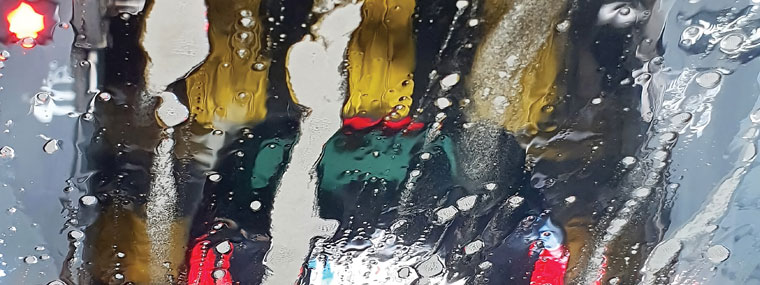
Stable with Opportunities for Growth
The Future of the Car Wash Industry
By Diane M. Calabrese / Published January 2023

A clean car is a more aesthetic car, and it is a safer car. Minimizing the use of water, chemicals, and power are certain to be part of the car wash industry in the future. Manufacturers in our industry are committed to meeting all these challenges and more.
Among the more is the cost of products—costs that have increased due to factors such as supply chain disruptions and the withdrawal from the workforce of potential employees.
Joseph Daniel, the CEO of ITD Inc in Tucker, GA, offers a candid appraisal of what he sees is the biggest challenge during 2023. “Car wash chemical products from the major branded companies have become prohibitively expensive in 2022, and users are searching for more reasonable options,” he says.
To strengthen the customers he serves, Daniel has taken action. “Our company is currently building private label product lines for distributors to reduce costs for car wash operators—and increase margins for distributors,” says Daniel. Therein, he sums up the synergistic tie between an operator and a distributor, with each one contributing to the success of the other.
The action coincides with the trend Daniel sees for 2023. “A major change I believe the industry will see in 2023 is a movement away from expensive branded chemical products and toward more reasonably priced private label options that are just as effective.”
Daniel believes the efficacious, yet less-costly, products will get noticed and embraced. “Once this option is well understood and accepted by regional distributors who realize they are the ones with the real customer relationship, the branded manufacturers will lose their perceived position of leverage, which is enabling their continued inflationary actions,” he explains.
The costs incurred by members of the car wash industry come from all directions. Even in a state where the sales tax structure is more tempered than in tax-it-all states, there are plenty of add-ons to the cost of operating a car wash.
Take Missouri as an example. Its Department of Revenue issued rules for taxable components of a car wash business most recently on October 24, 2022. Car wash chemicals (presoaks, soap, seal and protect, tire shine wax, etc.) are all taxable. Bay equipment, wash systems, and ancillaries are all taxable. Somewhat inexplicably, air fresheners, deodorizers, towels, and car mats are not taxable.
The overhead for car wash operators mounts very quickly. Anything a distributor or manufacturer can do to keep costs of products from escalating matters to the future of the industry.
Why, Where and How
Dirty windshields and mud-caked sidewalls are obvious safety risks. It’s not just safety that brings car owners to a car wash, however.
In some places, such as a dusty quarry, a manager riding around in a dust-covered automobile might speak to someone who overlooks grime. But most Uber and Lyft users do not want to offer their appraisal by writing it with their index finger in the dust—or pollen—that covers the vehicle.
Ride-share drivers want their vehicle to be recognized as clean—inside and out—and they either sponge and vacuum it themselves or visit a carwash regularly.
Simple pride of ownership also drives owners to car washes. Maintenance of a car encompasses cleanliness. Accumulation of debris on a hood or roof can lead to growth of mold or scratches in paint.
In some municipalities car washing in residential areas is prohibited. The restrictions add to opportunities for car wash companies.
The number of car washes per state correlates closely with the number of automobiles per state. Thus, California, where there is a declared move away from the combustion engine, still has the most car washes, according to the U.S. Census Bureau.
And as Florida has experienced an influx of more people and more cars, it has shown high growth in the number of car washes. From 2015 to 2019, more than one car wash was added for every four that existed prior to that interval.
As long as there is funding available to startups, we can expect more car washes in the future. The U.S. Small Business Administration (SBA.gov) highlights some of the car wash businesses benefiting from its loan and financing mechanisms.
SBA has a number of programs that aim to support business launches in economically disadvantaged areas. In that context, its programs look for tie-ins to worker training for employees and community involvement.
Funding for car wash startups via the SBA also includes innovative approaches. Six years ago, financing from the administration helped launch a company that based its customer model on ease of access. In this case regular visitors to the wash were identified via a chip in their windshield so they could proceed directly to the wash tunnel.
Expect to see more automation across the car wash process in the future. Not only will chip readers in automobiles handle access and tie to billing, but also more subscriber options may be offered. For example, a car wash owner benefits from being able to count on a specific number of washes per unit time.
By selling subscriptions for a set number of washes per month or year and allowing chip readers to do the gatekeeping, a more predictable revenue stream can be had. At the same time, with employee recruitment and retention continuing as a difficulty, fewer employees are required.
The environmental impact of wastewater runoff from car washing has many states and regions strongly recommending that owners take their automobiles to a commercial wash. Not only are commercial car washes equipped to properly collect and dispose of wastewater, but more and more of them collect and reuse wash water.
Ergonomics also will figure ever more prominently in the future. Automated and robotic elements in car washes reduce the number of employees required. They also ease the strain on the bodies of employees.
Numbers
The International Car Wash Association (ICA via https://www.carwash.org) is a good place to learn more about the car wash industry. A commissioned study by ICA in 2020 put the number of car washes in the United States at 62,668. In-bay automatic accounted for almost half that number with conveyor and self-service splitting the other half. Sales at car washes totaled $15 billion.
The perception that car washes fall mostly into the category of small- and medium-sized business is correct. But there is also a less visible market for manufacturers of car wash equipment and chemicals: Car rental and leasing companies, as well as many automobile dealerships and service centers, usually own car wash-
ing equipment. Many car washes are tied to auto detailing facilities.
An industry research firm, IBISWorld (IBISWorld.com), put the number of car washes and auto detailing facilities in the United States in 2022 at 58,930, which would be a drop from 2020 but not an unexpected decline given the business closures tied to 2020 and 2021.
Mobile washes have long been part of the industry. In the future, they may offer one of the biggest opportunities for power washing contractors who want to add services. Look to the increasing popularity of mobile tire installation services. No need to take a car to a facility; a truck with new tires and a service representative travels to the owner’s vehicle site and quickly installs new tires.
Service, then, in the form of more-of-it is something to expect in the form of ease of access to car wash facilities to we-come-to-you mobile washes. Add it to more reuse of water and a move toward 100 percent collection of wastewater.
See the activities of the California State Water Resources Control Board (https://www.waterboards.ca.gov/water_issues/programs/recycled_water) for an indication of things to come. The Golden State is far ahead of other places in monitoring, collection, treatment, and compartmentalization of types of wastewater from commercial activities, such as car washes. The reminder that what happens in California soon moves to the other parts of the nation applies.
To this point, we have not cited how much water commercial washes use. This is less and less as they become more and more technologically sophisticated, to be sure. Some comparisons are available.
The Western Carwash Association (WCWA.org) puts the average for a “professional car wash” at 8 to 12 gallons per car. (And it uses the markers of a toilet flush, five gallons, and a shower, 10 to 12 gallons, to lend perspective.) By any measure, a commercial wash, even a self-serve, which the association puts at 17 to 18 gallons, is more efficient than a DIY in the driveway at 40 or more gallons.
Many municipalities in California banned DIY car washing in 2022 because of drought, yet they still permitted the operation of commercial washes. Even when water is plentiful, commercial car washes confer an environmental advantage because they can more easily collect chemicals (e.g., phosphates) and hydrocarbon residues along with water.
A clean car is a safer car—visibility matters—and so does the reduction of drag that can increase with accumulated grime. The future of the car wash industry: Stable with opportunities for growth.





